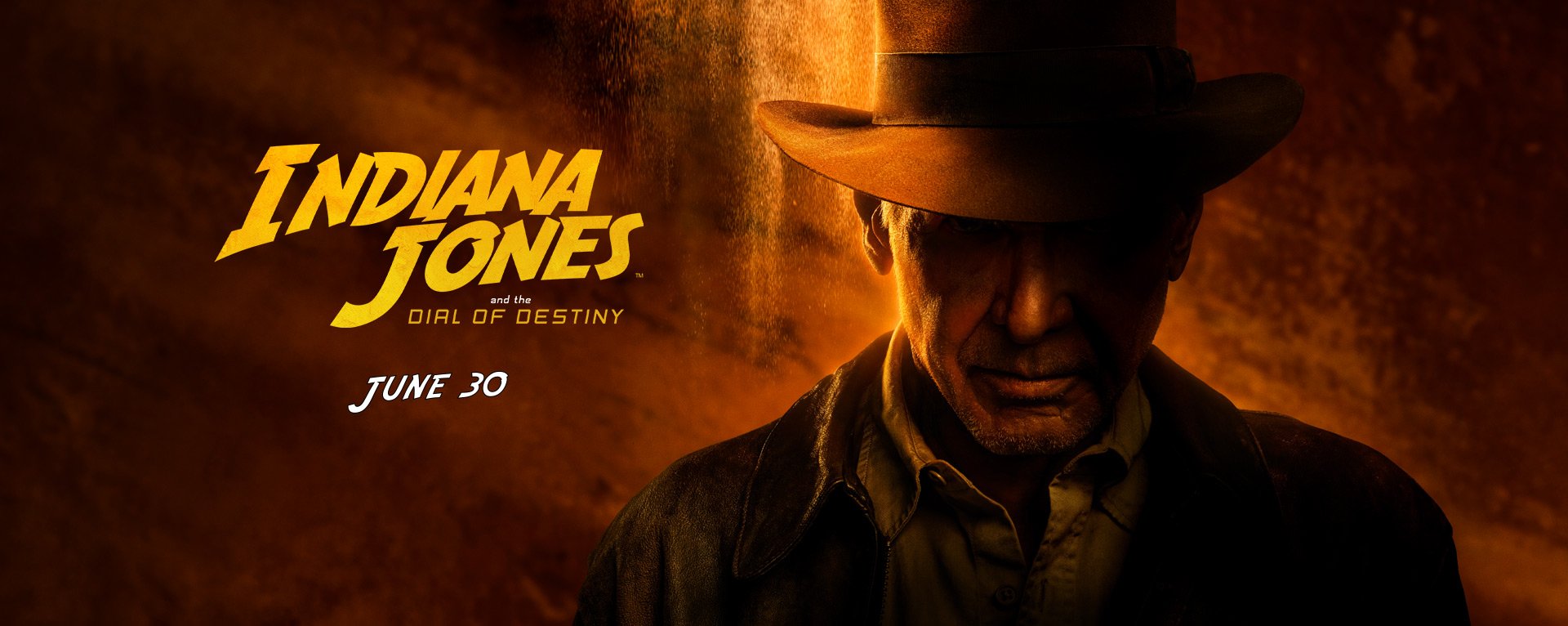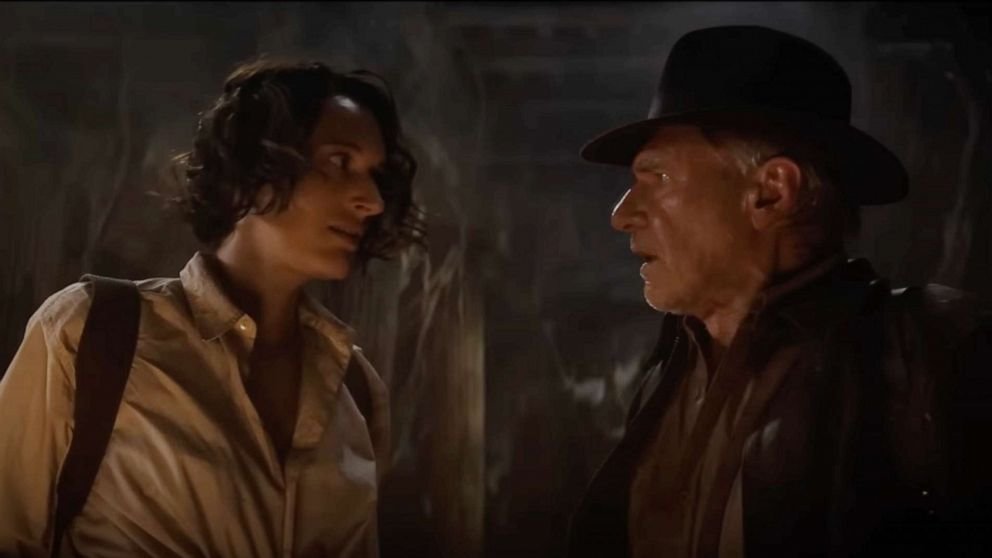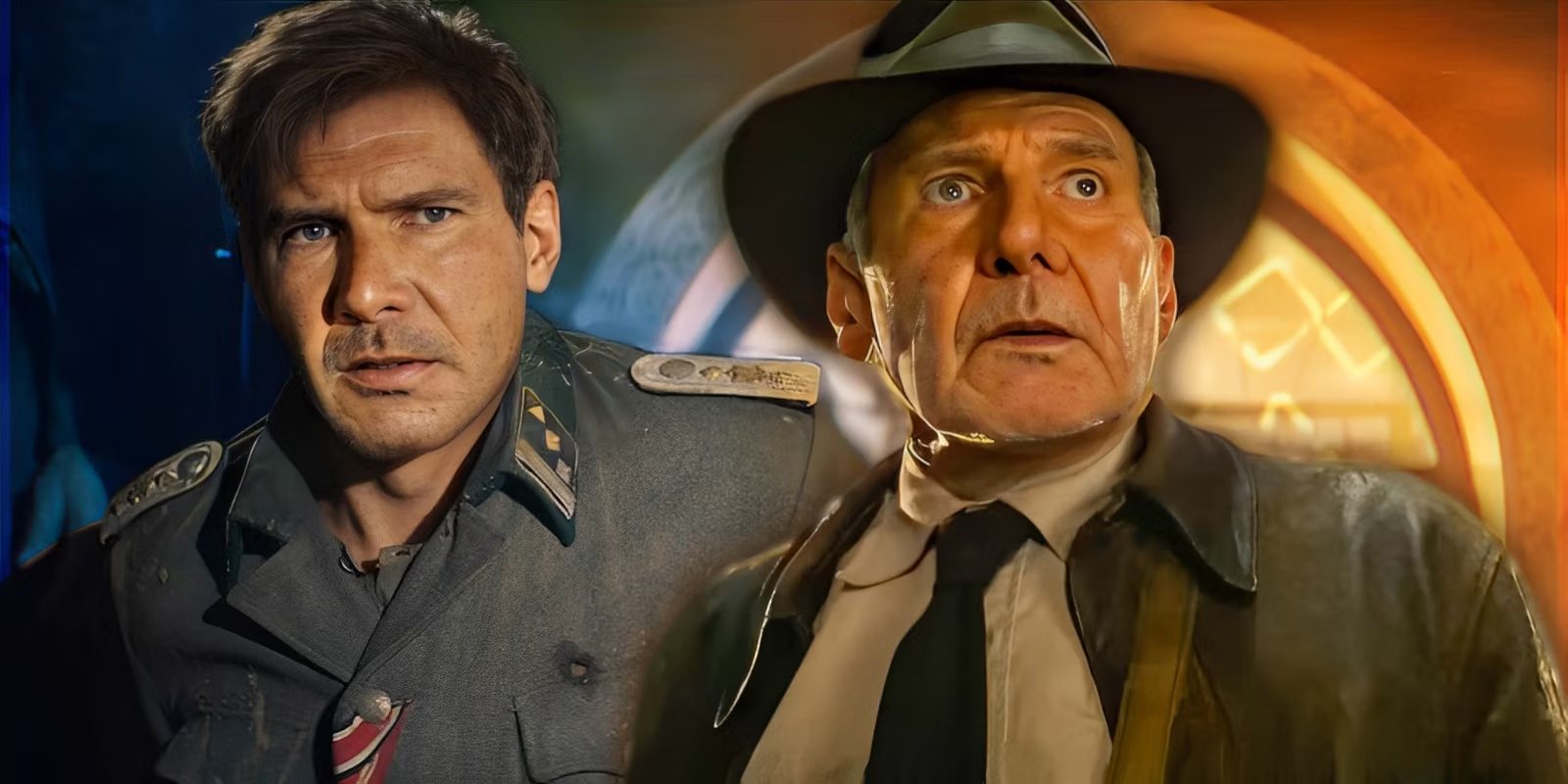What if a hero doesn’t get to live happily ever after? For quite a while, film fans thought Indiana Jones’ ride into the sunset at the end of 1989’s Indiana Jones and the Last Crusade was the character’s swansong. However, in 2008, we were treated to an older Indy with Indiana Jones and the Kingdom of the Crystal Skull. It tried to give our beloved adventurer a definitive ending, as well. Life goes on, though, even for people like Dr. Henry Jones, Jr.
Co-writer/director James Mangold’s Indiana Jones and the Dial of Destiny (opening this Friday) wants to grant fans an ending that maybe isn’t one hundred percent triumphant and uplifting. Mangold and his gaggle of writers (Jez Butterworth, John-Henry Butterworth, and David Koepp) give us a more troubled Indy in a world seemingly passing him by. This continues a theme played at the edges of KotCS, but it is centralized here. I believe Mangold’s work on Logan made him the perfect selection for this type of tale.
Both films are examples of the Old Hero genre that has been gaining in popularity over the last fifteen years or so. In these types of stories, we catch up with a hero that was formerly invincible. They are now old and the world around them is strange. There’s a fish-out-of-water element at play. Their bodies are betraying them and their pasts haunt them. They are inevitably sad, bitter, and full of doubt. I enjoy the genre, as it allows for new kinds of adventures and themes while still wearing the guise of the familiar. Even heroes get old and die. Would any real ending truly be unambiguously happy?
I will describe some of the plot next, but I will avoid major spoilers. However, you may want to skip the following two paragraphs to remain completely unspoiled.
The film begins with what is essentially an extended prolog in the waning days of World War II. Indy (Harrison Ford, digitally de-aged for this section) and fellow archaeology professor Basil Shaw (the always-welcome Toby Jones) are in France trying to prevent some Nazis from delivering the legendary Spear of Destiny to Hitler. Here, they encounter German rocket scientist Jurgen Voller (Mads Mikkelson). The physicist will eventually come to plague Indy once we move into the “present day” of 1969.
We catch up with Indy on the edge of retirement. His students no longer sit in rapt attention. People are looking to the future, with the return of the Apollo 11 astronauts grabbing the world’s attention and hippies rejecting the old ways and morals. Indy has become a relic of the past and he knows it. However, a bit of his old self is reawakened by the unexpected arrival of Helena Shaw (Phoebe Waller-Bridge), Basil’s daughter and his goddaughter. Voller is hot on her trail, though, and his thugs, led by the amoral Klaber (Boyd Holbrook), will stop at nothing to retrieve an item the Nazis lost on that long ago day in France. This forces Indy to don his fedora and grab his whip one last time, but will he make it out alive?
Additional players include Thomas Kretschmann as a determined Nazi colonel, Shaunette Renee Wilson as a CIA operative, Olivier Richters as a brutish henchman, and Ethann Isidore as Helena’s resourceful teenage partner. Antonio Banderas cameos as an experienced diver and ship captain. There are a few other familiar faces that you may or may not know about depending on how many trailers you watched, but I won’t spoil them here, just in case.
I touched on some of the writing above, but let me expand a bit on it here. The script nails the themes I mentioned and enjoyably plays within the bounds of the Old Hero genre. It doesn’t go overboard on the fan service, though there is some of that. Dialog is mostly naturalistic, or anyways it isn’t distracting. Big ideas are communicated clearly without being overly expository. The original trilogy famously utilizes the pulpy adventure serials of the ‘30s to flavor the narrative, while the fourth film looked to atomic-fueled ‘50s sci-fi for inspiration, although with more mixed results. Even though Dial of Destiny engages with the typical Indy formula (supernaturally powered MacGuffin, globe-trotting action, snakes!), it doesn’t seem to obviously pay homage to any genre that was popular in the late ‘60s. In that regard, it sets itself apart from the previous entries.
A lot of time is spent developing Helena’s character. At certain points, she feels like the main character in some ways. This isn’t a criticism. Helena is an interesting character with a well-developed arc. However, at 154 minutes, Dial of Destiny is the longest entry in the franchise by nearly a half hour. There are plenty of action sequences, but I will say that the film drags just a little in the middle. In the end, though, even if the prolog and the development of Helena’s character maybe take up too much screen time, it in no way ruins the picture.
I have a feeling that the film’s climax will ruffle some fan feathers. It goes big in a similar way to the ending of KotCS. As someone who didn’t completely object to that aspect of the fourth film, I am completely fine with it. Plus, if you’re given the keys to a Lamborghini like Mangold was by Steven Spielberg and George Lucas, you don’t just drive leisurely through the neighborhood.
DP Phedon Papmichael’s lensing is spectacular. There are some truly beautiful images on display here. My favorites include a chase through late ‘60s era Manhattan during a ticker-tape parade and antiwar protest, an underwater sequence, and the surprising climactic location. Sure, there’s some CGI, but the film mostly looks like an Indiana Jones picture. The period details are astounding, especially in the non-American locales.
Of course, the great John Williams’ score ensures that we don’t forget that this is an adventure and not everything has to be bittersweet. I like some of the variations that Williams employs with the traditional Indy theme. For instance, the quiet, almost nostalgic notes that hint at Indy’s past glories enhance the narrative’s motifs about an aging hero’s last hurrah. It’s beautiful work. Most people probably think of Ford, Spielberg, and Lucas as being the main authors of Indy’s mythology and cultural cache, but Williams is equally important in my mind.
I enjoyed most of the performances while being a little disappointed with a couple. Ford towers in his final turn as one of cinema’s most beloved characters. He understood the assignment and the moment wasn’t too big for him. Even at the age of 82, he puts in a legit movie star effort. Waller-Bridge is likable as ever and stands tall in the role. She injects the film with some interesting moral ambiguity and still maintains our sympathies. Isidore holds his own against the two massively talented leads. Unfortunately, I feel like Mikkelson and Holbrook aren’t allowed to flourish in their parts. I generally enjoy both actors, especially Mikkelson, but they’re both somewhat bland here. I wouldn’t call either performance “bad,” but I wish Mangold had let them off the leash a bit more.
Indiana Jones and the Dial of Destiny is the first entry in the series not directed by Steven Spielberg and not co-written by George Lucas, though both were onboard as executive producers. I’d say that James Mangold equipped himself quite well under that immense pressure. He avoided some of the silliness that plagued Indiana Jones and the Kingdom of the Crystal Skull while still acknowledging the growth of the Indiana Jones character and picking up on some of the themes presented in that film. I don’t doubt that there will be some folks that will turn their noses up at the ending and that’s fine. That’s just how these big franchise pictures go, these days. I, for one, greatly enjoyed this tale of an all too mortal hero heading out for one last adventure. I’d say that “happily ever after” is as much of a myth as the stories Indy investigates in his films. Of course, they always have a kernel of truth to them that dazzles and thrills us in the cinema. The same is the case here. Recommended for fans of ancient temples, two-fisted action, and satisfying endings, happy or otherwise.
Michael Cavender







